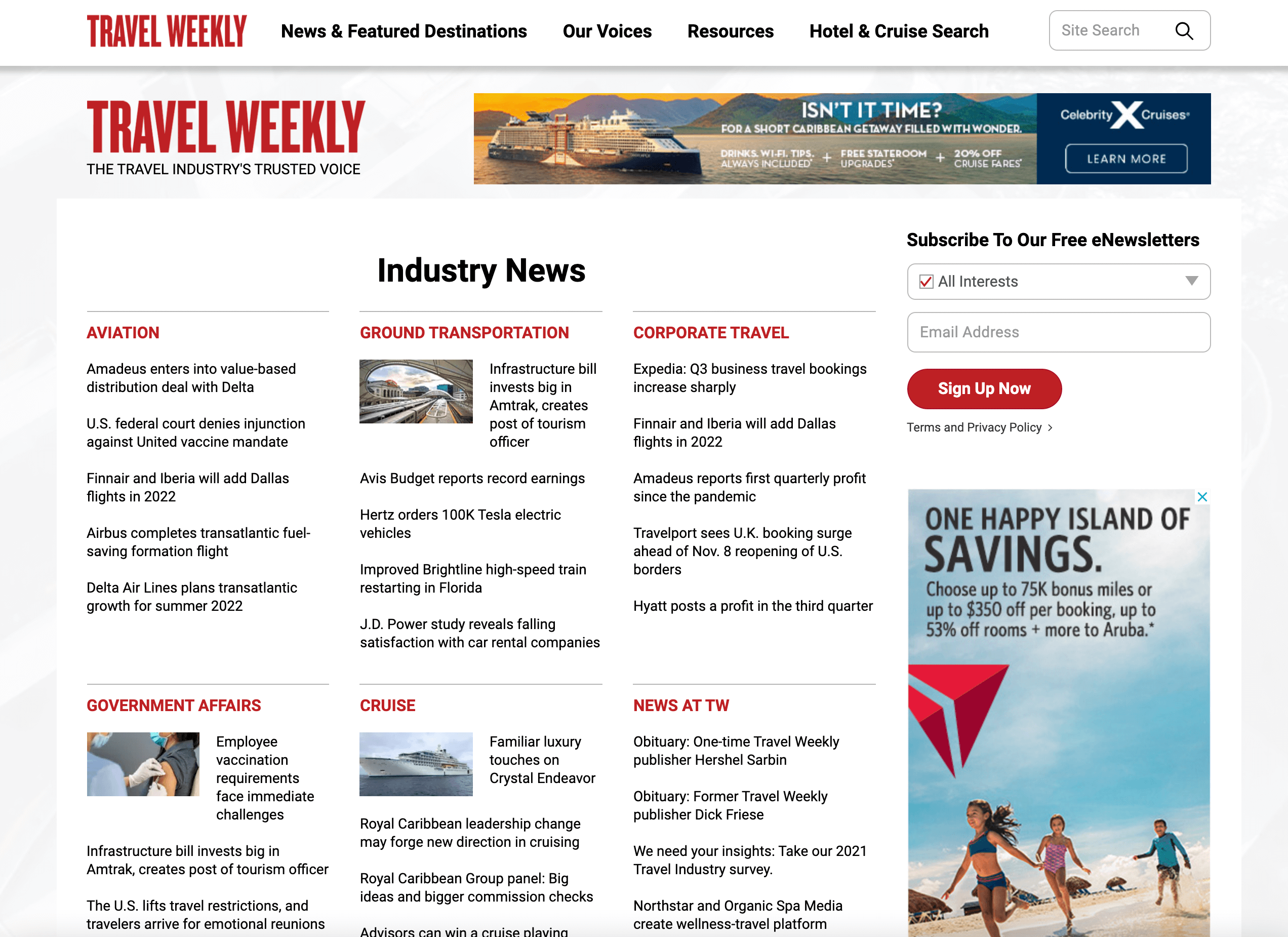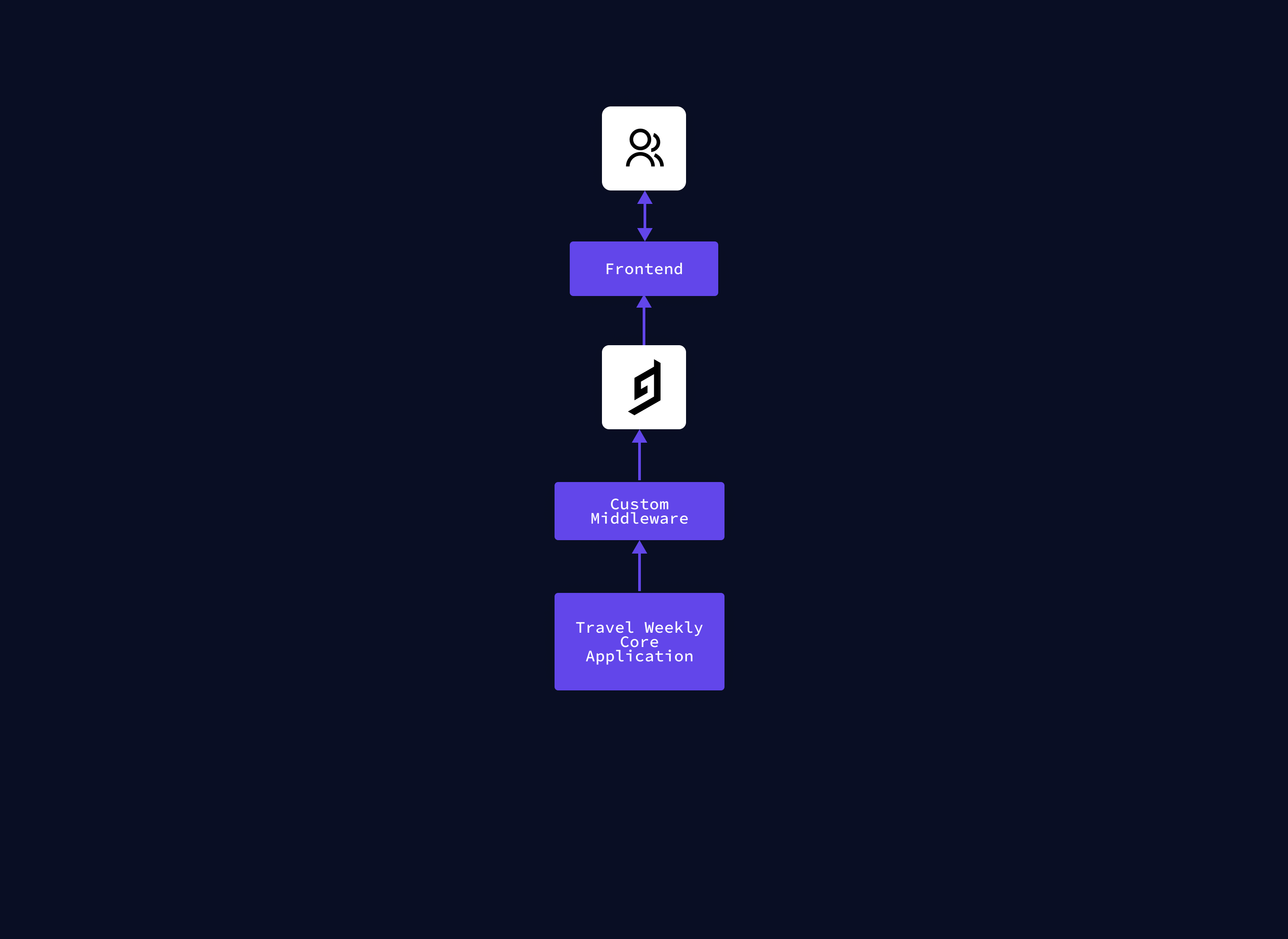SnapshotAnchor
Jacobs Media Group owns a variety of leading UK hospitality publishing brands including trusted brands like Travel Weekly and the Caterer. Travel Weekly, started in 1969, is an authority in the hospitality sector in the UK keeping readers informed on the latest trends, giving travelers more information on exciting destinations, sharing the latest news in the industry, and providing travel agencies tips on how to market to the latest trends. The Caterer is the largest hospitality magazine in the UK giving analysis on the industry, monthly reviews of restaurants, spotlights of important players in the industry. With around 400,000 monthly visitors for Travel Weekly alone, the Jacobs Media Group was limited by an overly complicated tech stack and an outdated approach to content management.
The Jacobs Media Group decided it was time to reevaluate their approach to their tech stack, including their approach to content management, and create a better performing website.
The ProcessAnchor
Each development team attempted to create their own version of a CMS for new projects or updated a previous version of the homebrew CMS which led to an architecture that was not optimized for SEO, mobile-friendly considerations or the best use cases for particular tools. The team was working with the sixth iteration of the tech stack and had chosen to build their own CMS which quickly became cumbersome and time-consuming to maintain.
The team decided it would be a better investment to reevaluate their entire tech stack, rather than trying to optimize the existing backend system. The frontend system would be improved to consider updated standards of user experience and security. In evaluating a headless CMS for their project, there were a couple of drivers that were essential to the team. The new system must be extremely flexible, reliable, have easy onboarding for the technical team, and have various support options.
Why GraphCMS?Anchor
The Travel Weekly team chose GraphCMS for the following reasons.
No-code Schema BuilderAnchor
The Schema builder and field types that enable teams to flexibly build content models that suit exactly their needs. The Travel Weekly team used the UI to build their content models and required very little onboarding to get up and running quickly.
Agile Content ManagementAnchor
The powerful Content Editor features enabled the team to work quickly and independently from the development team. In the past, the content team relied on the development team to make changes to content or dictate how things could be styled. With GraphCMS, the team was able to make changes to content without involving the Development team and could determine their own styling needs using the Rich Text or Markdown Editors. GraphCMS balanced robust features and functionality with a simple, straightforward UI which improved development times and gave the content team more freedom and flexibility.
Customer SupportAnchor
Because the Travel Weekly team was new to the world of MACH architectures, there was still a learning curve, for which they had certain support expectations.The high velocity of product development of GraphCMS meant that feature requests were often already in development and could be expected in the near future and this was always communicated clearly by the GraphCMS support team.
The Current SetupAnchor
GraphCMS is just one part of the redesigned modern architecture to create a much more performant portal. The new architecture which included a homebrew database and middleware that pushed the data to the newly designed website. The team chose to host the architecture on AWS and build using the LAMP stack technologies. GraphCMS interacts directly with this core application that relays information from the CMS to be stored in Travel Weekly’s database application.
Results and BenefitsAnchor
The content team has more independence and flexibility. They are no longer limited to minor styling or developer availability.
The great user experience when building the project schema; GraphCMS finds the sweet spot between having the necessary functionality and being overly opinionated on how to build the schema
Simple, straightforward UI which requires very little onboarding for new users
Fast response and resolution times with the customer support team

